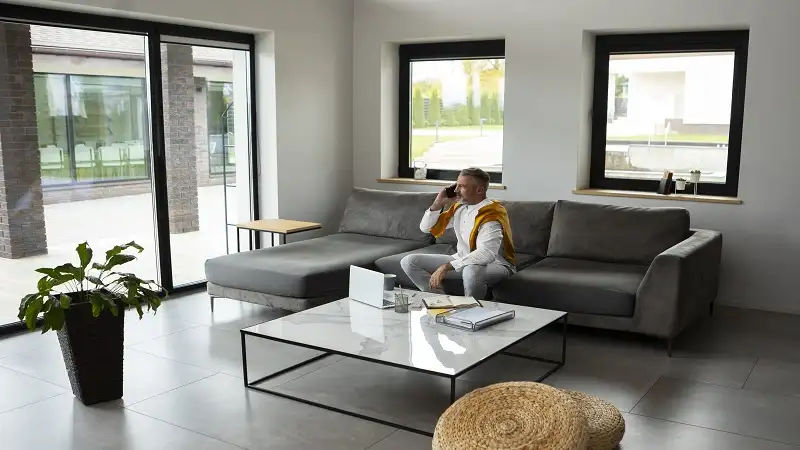In the quest for well-lit, sunny interiors, homeowners and interior designers often encounter an age-old adversary: glare. The harsh intrusion of direct sunlight not only diminishes the aesthetic appeal of a space but can also affect productivity, comfort, and even the well-being of its inhabitants. Recognizing the importance of mitigating these blinding intrusions without sacrificing natural light, this post explores traditional and cutting-edge solutions for glare reduction.
The Problem with Glare in Homes
Glare occurs when an excessive brightness contrast between different parts of the field of view causes discomfort or a reduction in visibility. In homes, this can lead to eye strain, difficulty in viewing screens, and an overall uncomfortable living environment. The challenge lies in balancing the desire for abundant natural light with the need to control its more unwelcome effects.
Traditional Methods and Their Limitations
For years, the go-to solutions for managing sunlight have been curtains, blinds, and shades. While these options offer a degree of control over light ingress, they often do so at the expense of natural light, requiring a compromise between illumination and comfort. Furthermore, they can require manual adjustment throughout the day and may not perfectly address the dynamic nature of sunlight.
Stepping into the Light: Innovative Technologies
Smart Glass
Smart glass represents a leap forward in glare reduction technology. It allows windows to transition from transparent to opaque with the flip of a switch, a tap on a smartphone, or even automatically in response to sunlight. This technology not only controls glare but also maintains a connection with the outside world without the need for physical window treatments.
Anti-Glare Films
Applied directly to window surfaces, anti-glare films can significantly reduce the amount of light entering a room. These films can be particularly effective in spaces where direct sunlight is a problem for only part of the day, offering a cost-effective solution that preserves views and natural light.
Adjustable Tint Windows
Adjustable tint windows, like those for home use in Salt Lake, use a small electrical current to alter the opacity of the glass, providing instant control over the amount of light and glare entering a room. This technology offers the ultimate in convenience and control, allowing for precise adjustments to lighting conditions throughout the day.
The Role of Landscaping in Glare Reduction
Beyond technological solutions, landscaping plays a critical role in natural glare reduction. Strategic placement of trees, shrubs, and other plants can provide an effective barrier against direct sunlight, significantly reducing glare while enhancing the aesthetic appeal of outdoor spaces. This approach not only offers a sustainable way to manage light and heat but also contributes to improving air quality and promoting biodiversity. By combining nature’s beauty with the practical benefits of shade, homeowners can create serene, comfortable living environments both inside and out.
*Navigating the Options
Choosing the right glare reduction solution requires consideration of several factors, including the orientation of windows, the architectural style of the home, and budgetary constraints. For those seeking temporary or cost-effective solutions, anti-glare films might be the best option. Meanwhile, smart glass and adjustable tint windows offer a longer-term investment in comfort and energy efficiency.
Gazing into the Future
The future of glare reduction looks bright, with ongoing advancements in materials science and IoT integration promising even more sophisticated control over sunlight. Innovations on the horizon include windows that can harvest solar energy while adjusting their tint and next-generation films with improved clarity and performance.
Conclusion
Fighting glare isn’t just about comfort; it’s also about keeping a balance between indoor spaces and the outdoors. By using innovative glare reduction technologies, homeowners and designers can block the harsh sunlight while still enjoying its warmth. Options like anti-glare films, smart glass, or adjustable tint windows offer solutions that meet aesthetic, functional needs, and budget.
